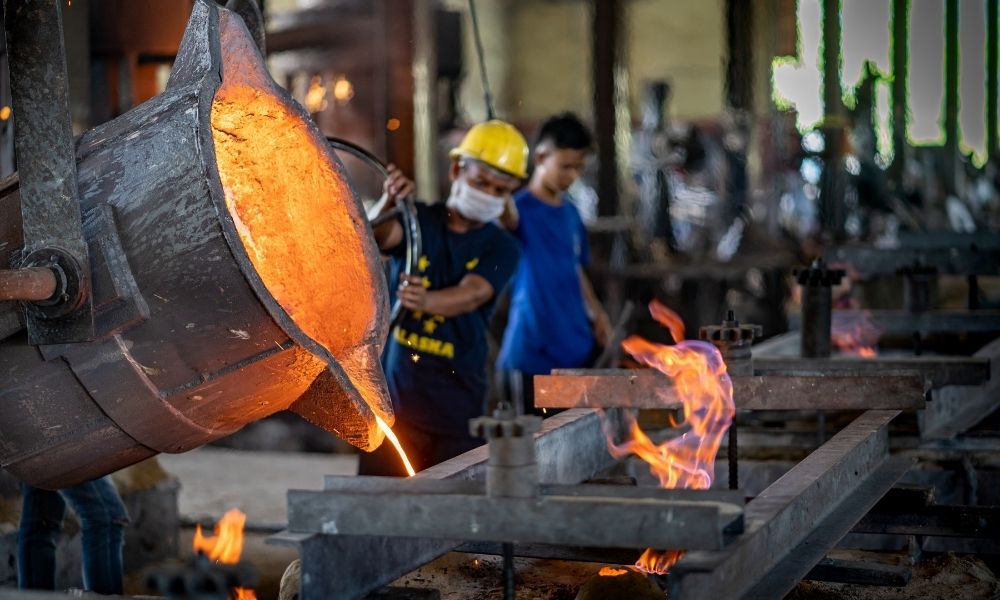Understanding the Process of Metal Casting
Metal casting has been a base of manufacturing for centuries, providing the foundation for various industries to create complex and durable components. Non-ferrous metal foundry operations are critical in modern manufacturing, offering diverse materials with exceptional properties for various applications. However, among the different types of metal casting, gray iron casting stands out due to its unique properties and widespread applications. This blog delves into the detailed process and highlights its steps from mold creation to the final product, and why it remains a preferred choice for many sectors.

Mold Creation
A mold is essentially a hollow form that shapes the molten metal as it cools and solidifies. Typically, molds are made from sand, which is mixed with a bonding agent to maintain its shape during the casting process. The sand mold must be carefully designed to include the desired shape of the component, as well as channels for the metal to flow and air to escape. This accuracy ensures that the final cast product meets the required specifications and quality standards.
Melting and Pouring
Once the mold is prepared, the next step is melting the iron. Gray iron casting foundry professionals know that gray iron, known for its high carbon content, is melted in a furnace at temperatures exceeding 2,500 degrees Fahrenheit. The molten iron is then poured into the sand mold through a carefully designed gating system. This system controls the flow of the metal to prevent defects and ensure even distribution. The expertise of the foundry workers is crucial at this stage to handle the extreme temperatures and to pour the metal accurately.
Solidification and Cooling
After the molten iron is poured into the mold, it begins to cool and solidify. The cooling process is critical as it determines the mechanical properties of the final product. Gray iron is known for its excellent castability and machinability, largely due to its unique graphite microstructure that forms during solidification. The cooling rate must be controlled to avoid internal stresses and to achieve the desired hardness and strength.
Finishing and Inspection
Once the casting has cooled and solidified, the mold is broken away to reveal the raw cast part. This part then undergoes various finishing processes, such as grinding, machining, and heat treatment, to achieve the final dimensions and surface finish. Each casting is carefully inspected for any defects or deviations from the specifications. This ensures that only high-quality parts proceed to the next stages of manufacturing or assembly.
Applications and Advantages
Metal casting is preferred in many industries due to its excellent properties such as high compressive strength, wear resistance, and good thermal conductivity. It is commonly used in the automotive, construction, and machinery sectors for components like engine blocks, pipes, and machine bases. The ability to produce complex shapes with high precision makes gray iron casting a versatile and cost-effective solution.
Incorporating Non-Ferrous Metals and Custom Solutions
For instance, specialization in metals like aluminum, copper, and zinc, offers unique properties such as corrosion resistance and lightweight characteristics. These materials are essential for applications requiring different performance criteria. For projects needing specific aesthetic and mechanical properties, custom brass castings provide tailored solutions. Brass, an alloy of copper and zinc, is known for its corrosion resistance and attractive appearance. They are widely used in decorative hardware, plumbing fixtures, and musical instruments.
Illini Foundry is a leader in metal casting, providing comprehensive services from design to final product. With expertise in both ferrous and non-ferrous metals, they cater to a wide range of industries, ensuring high-quality components. To learn more about their services, visit their website: https://www.illinifoundry.com/
